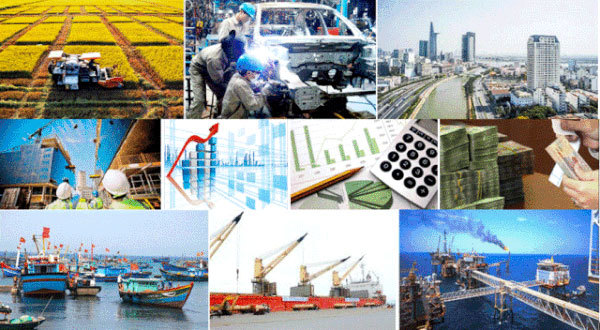- an academic branch of the Bank for Investment and Development of Vietnam.
 |
| A new report by BIDV Training and Research Institute put Vietnam's GDP at $334.6 billion. The report also made a number of policy recommendations for the country's socio-economic development in 2021-30. — VGP Photo |
The report was based on the country's revised GDP in December 2019, which found GDP growth was revised upwards by an average of 25.4 per cent each year in 2010-2017.
This came out to 0.13-0.48 percentage points higher for each year's GDP growth figure against previously released figures, or roughly US$40 billion annually.
Revised GDP for 2020 was estimated at $334.6 billion, slightly lower than the figure by the International Monetary Fund, which put the country's GDP at $340.6 billion.
One of the causes behind the changes was attributed to increased shares of the industrial, construction and services sectors, the three economic pillars expected to drive growth in 2021-30. Notably, the industrial and service sectors are set to account for 80 per cent of the country's GDP by 2030, according to the General Statistic Office of Vietnam (GSO).
The revised figure also put Vietnam, with income per capita of $3,404 in 2019, closer to the World Bank's definition of a middle-income country ($3,466-$12.055 income per capita). It also put the country on a trajectory to achieve income per capita of $6,500 in 2030. This will likely hurt Vietnam's ability to secure financial aid and preferential loans in the future.
At the same time, the country's contribution to international organisations will also increase, making it trickier for the Government to balance its budget.
The report also made policy recommendations for the country's socio-economic development in 2021-30. It said the GSO should make public all data and methods employed in the revision of GDP to improve its credibility and accuracy of economic forecasting. The report also called for a uniform economic reporting process, in which the same criteria are used by central and local agencies.
Notably, researchers urged the National Assembly and the Government to make adjustments to public investment, debt level and Government expenditures, which were all put under critical level after the GDP revision, based on revised figures to minimise risk to the economy.
More importantly, the report recommended the Government set objectives for the country's socio-economic development in 2021-30 with an emphasis on sustainability, inclusiveness and innovation. Vietnam's top priorities for the foreseeable future should include investment in the development of science and technology, digitalisation, administrative reform and improving its human resource, according to the report. VNS

IMF trims Vietnam GDP growth forecast to 1.6% in 2020
The country would remain the only one with positive growth among five major economies in ASEAN, and its economic growth would rebound to 6.7% in 2021.